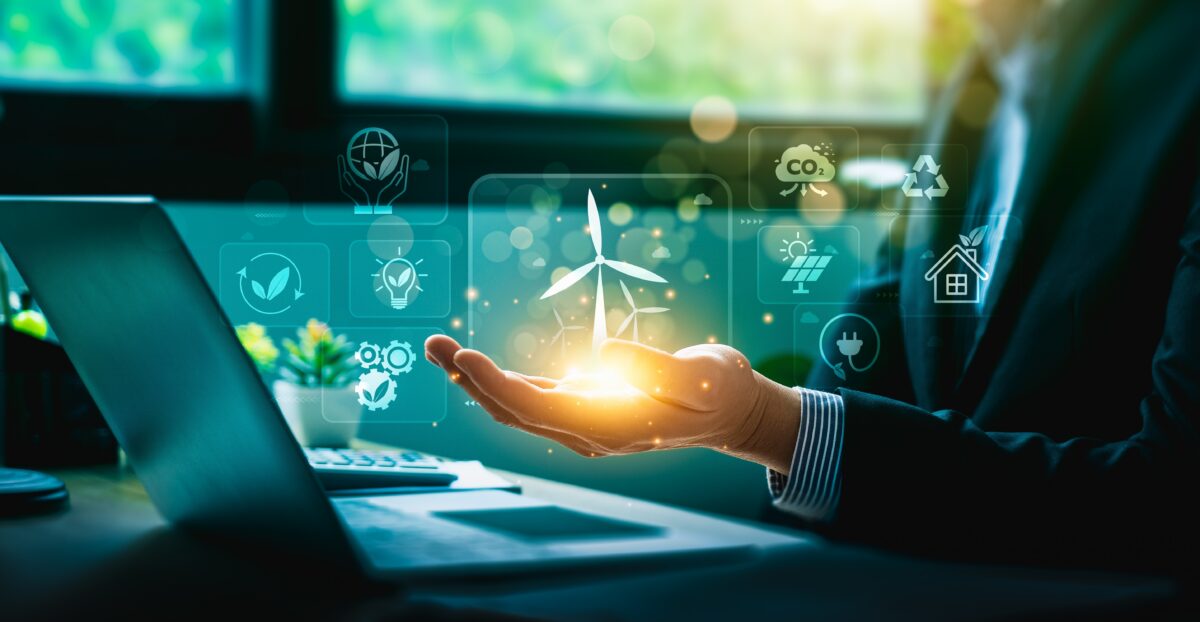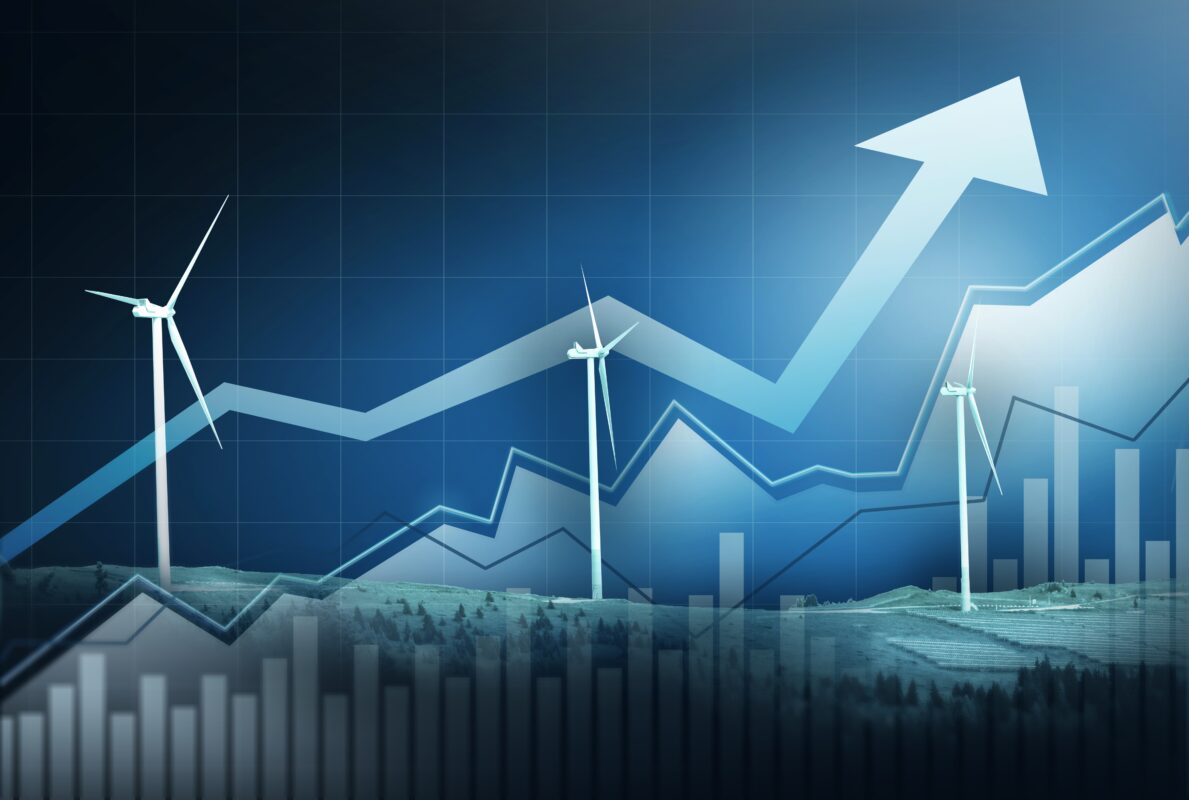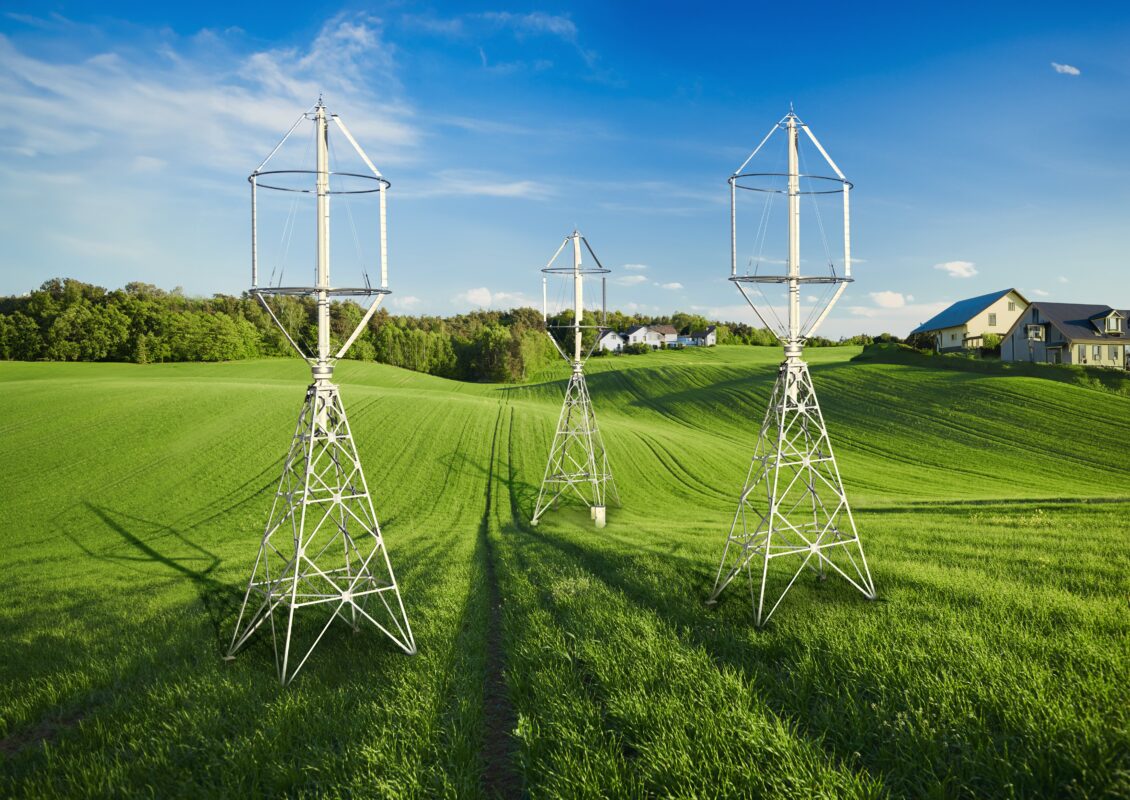Costs of manufacturing and building offshore wind farms have reduced by 60% – within just a year. And, unlike fossil fuels, wind energy is always free, available and easy-to-use. How does it affect the economic matter of energy generation? Is the wind energy a new opportunity of global cost reduction? What can be made to achieve this goal?
Overview of renewable energy sources and their significance in the modern energy landscape
Conventional sources: oil, natural gas, coal, remain the primary global energy sources. But their impact on power generation is gradually decreasing. Share of renewable energy sources has been rising in the last decade and is now reaching 30%. The rise is significant and stable even in the face of rising global energy demand. What is especially notable, is the domination of two renewable energy sources: solar and wind. Together, they share over 13% of global power generation.
These numbers lead us to the conclusion that clean energy sources play a key role in energy transition all over the world. The progress within the last decades was possible mostly thanks to development in technology and the decline of manufacturing costs. For example, between 2021 and 2022 the average cost of onshore wind farms was reduced by 68% and offshore wind farms – by 60%.
Is there a potential for cost reduction through renewable energy?
Are decreasing manufacturing and installation costs apply to cost reduction of renewable energy generation? This is definitely one of the key factors. Lower costs translate into a shorter time of return on investment.
But it is not the only factor that we need to take into account when comparing costs of renewable energy with costs of conventional energy. The most important fact is that renewable energy investments are very low during the period of operation. This is the main reason why using renewable energy sources has potential for reduction of global costs.
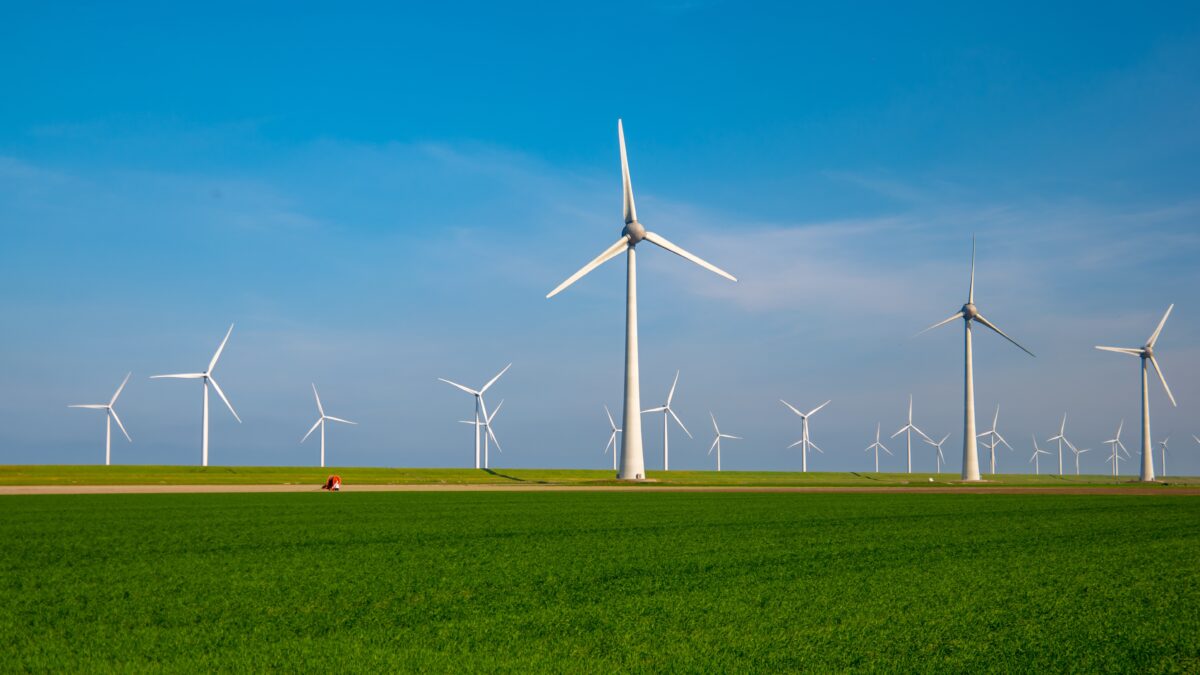
Wind Energy as a Cost-Effective Solution
Analysis of wind energy and its role in reducing costs
Data provided by IRENA (International Renewable Energy Agency) are a proof of that. The global LCOE (Levelized Cost of Electricity, a measure of an average cost of energy generation over a generator’s lifetime) of wind power in 2022 was 52% lower than LCOE of the cheapest fossil-fuel energy solution. And, that’s more, it’s continuously decreasing, which makes it even more competitive. For new onshore wind projects, the global LCOE decreased by 5% from 2021 to 2022.
Cost Factors in Wind Energy
Discussion on the cost of renewable energy, including wind power and its components
What needs to be taken into account when calculating total costs of renewable energy? There are a couple of factors:
– costs of manufacturing components of the renewable energy systems: solar panels, wind turbines etc.;
– costs of transportation and installation of the system;
– if necessary: costs of purchasing or leasing the land for wind or solar farm;
– costs of exploitation: maintenance, inspections, repairs, components replacements etc.;
– cost of recycling or waste storage.
What stands out in this list is that the renewable sources-based energy systems generate costs mostly at the beginning, at the stage of manufacturing and installation. This is the main difference between solar or wind energy systems and conventional energy systems, which need to be powered by fossil fuels for the whole period of operation.
Still, it is important to say that talking about “free energy” in the context of wind turbines or solar systems is a serious overstatement. Every owner of a small wind turbine or a wind farm should be aware of the costs and put some effort in doing some research before making the investment. It is important to take into account local conditions: investing in wind energy system may be even 50% more expensive due to specific site conditions, large distances resulting in higher costs of transport, additional fees.
Examination of turbine blades, types of wind turbines, and their effect on overall costs
Total costs of generating wind power depends, most of all, on the wind turbines capacity. By “capacity” we mean the effectiveness: the amount of energy that can be generated over a certain period of time. It depends, of course, on the weather conditions and the wind farm location. But, in general, we can assume the average amount of energy for each wind turbine and compare their effectiveness among each other.
What does the capacity depend on? The main factor is the size of a wind turbine and its components – especially the blades. The larger the turbine blades are, the more mechanical energy of the wind they can capture, therefore, the more electrical power they can generate. Does it mean that the large wind turbines are more cost-effective? The relation between costs and effectiveness is not that simple. Larger devices and their components are more expensive at the stage of manufacturing, they also require more advanced support (thus, also more expensive) at the stage of transport and installation.
There is one more important matter related to the capacity. When considering investing in wind energy, you can choose between two types of wind turbines: horizontal (more popular, the ones with blades moving parallel to the wind direction) and vertical (turning perpendicular to the wind direction). The first type is considered to be more efficient, thus more profitable. But to compare both solutions, we need to look at a bigger picture. Horizontal axis wind turbines require more space – the recommended distance between two devices is at least 5 rotor diameters. For larger wind turbines, the distance can reach even 200–400 metres. This means that much land purchased or rented for a wind farm remains unused. It’s a hidden cost of horizontal axis wind turbines maintenance. Vertical axis wind turbines (like Freen products), for a change, are much more efficient in the context of space utilization. This kind of turbines can be used in conditions of limited space (even on rooftops), which makes them perfect for households
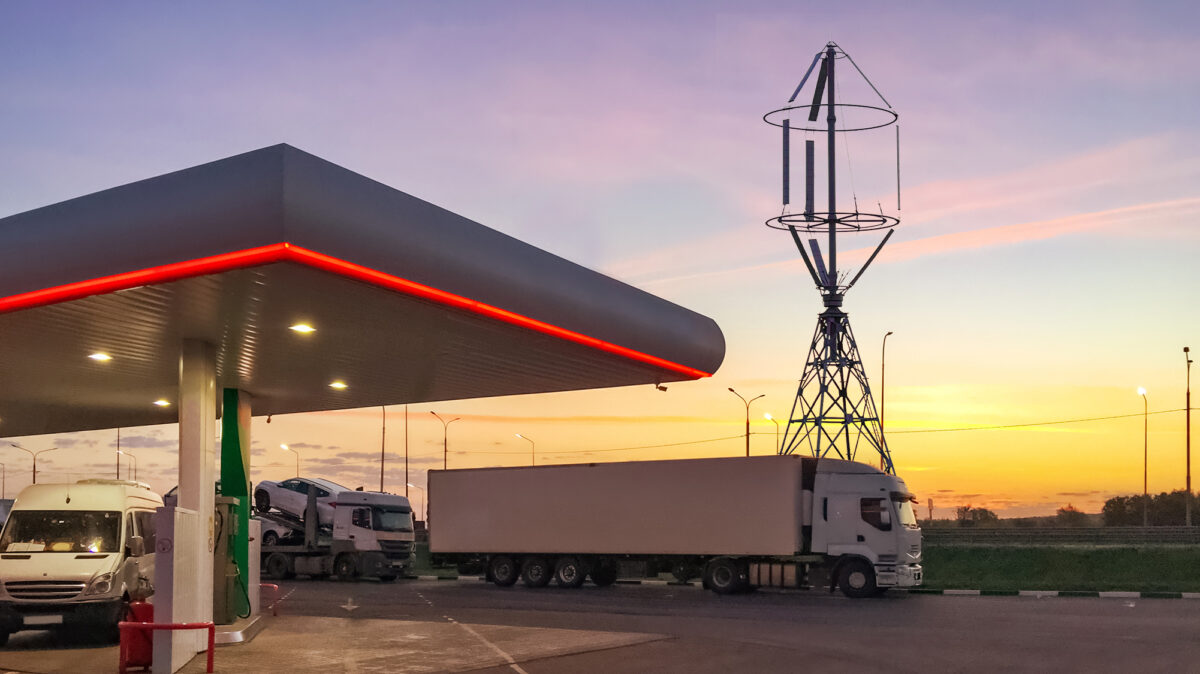
Wind turbine maintenance and its impact on cost-efficiency
Are wind turbines expensive to maintain? To answer this question, we can support with some research conducted by German scientists. They estimated that the average cost of wind turbine maintenance is 1–2 euro cents per kilowatt-hour of energy generated. These values may vary, depending on a wind turbine’s age and technology.
The structure of wind turbine maintenance costs is, according to German researchers, the following:
– service and purchasing spare parts: 26%;
– land rent: 18%;
– insurance: 13%;
– administration: 21%;
– power from the grid: 5%;
– miscellaneous: 17%.
The Economic Benefits of Renewable Energy
Explanation of the economic impact of renewable energy
In the discussion on the clean energy sources, the most emphasis is put on the environmental impact. But the economic impact of renewable energy is also worth mentioning, especially in the context of growing costs of exploring and processing fossil fuels.
Breakdown of economic benefits of renewable energy through wind generation
Let’s sum up the economic benefits of renewable energy generated from wind. We can divide them into several categories, which are:
– Savings from limiting fossil fuels extraction – this is the most vivid example of cost reduction through generating power from wind energy. Every 1 kWh of a wind turbine energy means 1 kWh less of energy from conventional sources. And extracting fossil fuels is becoming less and less profitable – there are calculations made by AIDA (environmental organization operating in the USA and Latin America) showing that acquiring 1 ton of coal in some countries costs more than its market price.
– Environmental and health benefits – they, as well, have their impact on economy. No CO2 emissions, no mining of raw materials and burning them translate into better health level of all population. How does it apply to the costs? Clean energy means less respiratory diseases and lower health care expenses. This correlation may not seem obvious, but still is a significant factor of reducing costs by using renewable energy.
– Lower costs of transportation of fossil fuels. Not every conventional power plant is situated in a neighbourhood where natural gas, coal or oil are mined. In most cases, fossil fuels are sourced far from the places they are transformed into electrical power. This means that in the cost of every unit of generated power, we need to take into account costs of transportation. In the case of wind turbines, it’s the other way round: the offshore wind farms are located in areas with frequent and strong winds – therefore the energy source is (almost) always available.
– Lower energy costs for individual users – a large share of renewable energy in overall energy generation can affect budgets of individual households, not only the ones that owe wind turbines, but all of them.
Consider switching to wind energy but don’t know where to start? Let us help! Schedule a free consultation with our team to assess wind potential in your area.
Case studies or examples of successful renewable energy projects demonstrating economic benefits
One of the success stories of reducing energy generation costs thanks to wind turbines was published by U.S. Department of Energy’s Office of Indian Energy. It highlights how wind energy supports remote villages in Alaska, with no access to local fossil fuels.
In the past, the power generation system was based on the 9 large diesel generators, which had to be fuelled by 9 millions gallons of oil transported from distant areas of the country. Thanks to Alaska Village Electric Cooperative (AVEC), a non-profit organization, Stebbins Native Corporation, with financial support from U.S. Department of Energy’s Office of Indian Energy, a wind farm was built. It covers the demand for energy in 50%, helping to power 328 buildings in the area of Stebbins and Saint Michel villages.
The outcomes of the project were:
– reducing costs of purchasing 104 700 gallons of fuel each year;
– energy savings of $11,4 millions throughout 25-year operation of the system;
– reducing greenhouse gases emissions by 930 metric tones each year – this equals removing 207 gasoline-powered vehicles from roads.
Future outlook
Potential future developments in wind technology and their expected impact on costs
The greatest hopes in energy generation are associated with increasing capacity of wind turbines. Costs of manufacturing turbines and their components have already significantly fallen – but we cannot expect this trend will last forever. There are some symptoms showing that the initial costs may be increasing in the next years. In 2022 Nordex, one of the largest wind turbines manufacturers, raised its prices by 12%, due to manufacturing costs increases.
What seems to be much more important, is obtaining higher renewable energy energy efficiency (more energy produced by a wind turbine in a certain period of time) for the same value. National Renewable Energy Laboratory researchers found that technology innovations can increase the capacity of wind turbines in the United States by even 80% – and it is highly likely that it will happen in this decade.
Opportunities for further renewable energy investments and their implications for cost reduction
Further cost reduction can be possible thanks to system support by decision makers. If the governments and energy companies support green energy, individual users can significantly feel the decline of costs per every kilowatt per hour.
This kind of support is already present in some highly-developed countries. Germany is one of the examples – owners of wind turbines can benefit from a special tariff rate and repowerment bonus. Other ways of supporting the shift into wind energy and participating in its costs are low-interest loans or financing R&D projects. All these actions led to an impressive growth of the share of renewable energy in total energy consumption – from 6,5% in 2005 to 18% in 2020. This score makes Germany the third-largest wind energy market in the world.
Final thoughts on the economic renewable energy advantages and prospects
How can renewable energy lead to cost reduction?
When we explore the subject of renewable energy generation costs, we can see a clear trend: they decrease over time. Is this reduction constant? Much depends on the technology – wind energy will be profitable only when the right one is used. There is still much to do be done in the terms of energy efficiency. The wind turbines can be manufactured with recyclable materials, their components can have longer service life, so they don’t have to be replaced with new ones in many years.
And it’s not all about the future. In Freen, we focus on cost reduction and increasing efficiency just now: all our vertical axis small wind turbines are made from metal, which can be recycled many times. And here are some data showing how efficiently they work, using the example of the Freen-20 wind turbine:
– it generates 10-15x more energy than it consumes;
– it consumes 2,5 MWh of energy – for comparison, an average large wind turbine consumes 4,5 GWh;
– its energy payback starts only after 7 weeks of operation (for big wind turbines it’s 6 to 9 months) – it means its economic benefits outweigh costs after this period;
– its lifespan is 20 years – and after this time it can be recycled, so its recycling costs are close to 0;
– it emits only 25 g of CO2 per each kWh of energy, which is less than the amount of CO2 emitted by solar plants (41 g) and coal plants (1002 g).



